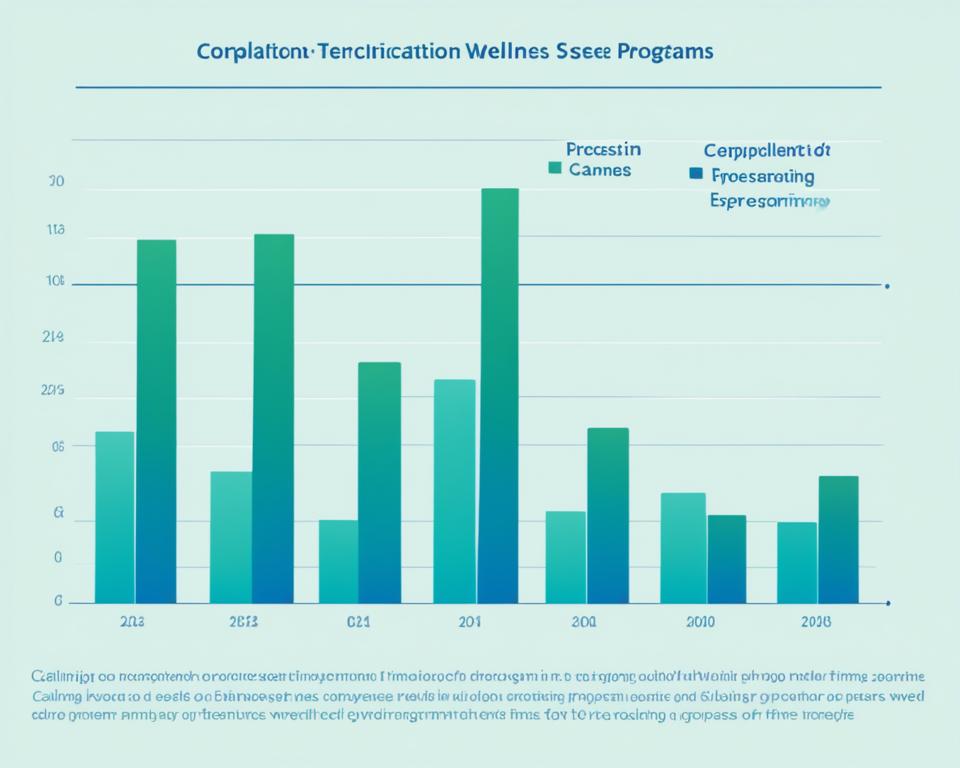- 1. Introduction
- 2. Key Components of Premium Wellness Programs
- 3. Benefits of Implementing Premium Wellness Programs
- 4. Customization and Personalization
- 5. Mental Health Support and Resources
- 6. Promoting a Culture of Well-being
- 7. Technology and Wellness Programs
- 8. Measuring the Effectiveness of Wellness Programs
- 9. Conclusion
- 10. FAQ
- 10.1 What are the key components of premium wellness programs?
- 10.2 What are the benefits of implementing premium wellness programs?
- 10.3 How can wellness programs be customized and personalized?
- 10.4 What kind of mental health support and resources do premium wellness programs offer?
- 10.5 How can organizations promote a culture of well-being?
- 10.6 What role does technology play in the evolution of employee wellness programs?
- 10.7 How can organizations measure the effectiveness of their wellness programs?
- 11. Source Links
As a professional copywriting journalist, I understand the immense toll that work-related stress can take on both individuals and organizations. Addressing this pervasive issue is crucial, and implementing well-designed wellness programs can be a powerful solution. These programs have the potential to not only reduce stress levels but also enhance employee well-being, engagement, and loyalty.
The American Psychological Association’s 2022 Work and Wellbeing Survey found that 81% of employees consider how employers support mental health to be an important factor when seeking a new role, and 37% of respondents said providing mental health resources would help improve their stressful work environment. Furthermore, the International Foundation of Employee Benefit Plans reports that 53% of organizations offering wellness programs saw improved employee engagement and job satisfaction, indicating a clear reduction in stress levels.
A recent MediKeeper survey analyzed data from more than three million workers and revealed that employees with access to wellness programs at work experienced lower stress levels compared to those without. These findings underscore the value of implementing comprehensive stress management techniques, relaxation exercises, mindfulness meditation, cognitive restructuring, and other self-care activities that can foster work-life balance and stress resilience.
Key Takeaways
- Workplace wellness programs can effectively reduce stress levels and improve employee well-being.
- Providing mental health resources and support is a top priority for many employees when seeking new job opportunities.
- Wellness programs that offer stress management techniques, relaxation exercises, and mindfulness practices can enhance work-life balance and stress resilience.
- Comprehensive wellness initiatives have been shown to increase employee engagement, job satisfaction, and loyalty to the organization.
- Integrating technology, such as mobile apps and wearable devices, can further enhance the accessibility and personalization of wellness programs.
Introduction
Work-related stress is taking its toll on organizations across the country, placing a burden on employers to do more to care for their employees. The American Institute of Stress found that 83% of people suffer from work-related stress. With workplace stress costing organizations billions of dollars due to healthcare costs, absenteeism, reduced productivity, and employee turnover, employers have a strong incentive to reduce job-related stressors.
Prevalence of Work-Related Stress
The prevalence of work-related stress is a significant concern, with the American Institute of Stress reporting that 83% of people suffer from this issue. As employers grapple with the consequences of work-related stress, they must prioritize finding effective solutions to support the well-being of their workforce.
Impact on Organizations
The impact of work-related stress on organizations is substantial, resulting in healthcare costs, absenteeism, reduced productivity, and employee turnover. These factors place a significant financial burden on employers, underscoring the need for effective interventions to address this widespread problem.
Importance of Wellness Programs
One of the best ways to lower work-related stress is to establish workplace wellness programs. Employees want wellness programs and perks, and research has shown that they help employees feel less stressed. Wellness programs have been found to improve employee engagement and job satisfaction, indicating a reduction in stress levels. By implementing comprehensive wellness initiatives, employers can positively impact the well-being of their workforce and, in turn, the performance and success of their organization.
Key Components of Premium Wellness Programs
Comprehensive workplace wellness programs often incorporate a range of key components to address the holistic well-being of employees. Among the most prevalent elements are health screenings and assessments, physical fitness and exercise initiatives, and nutrition and healthy eating programs.
Health Screenings and Assessments
Health screenings and assessments provide employees with critical information about their current health status, allowing them to identify potential issues before they become serious. By incorporating regular health evaluations within wellness programs, organizations can facilitate early detection of diseases and encourage employees to adopt healthier lifestyles.
Physical Fitness and Exercise Initiatives
Maintaining physical activity is essential for overall well-being, and many employers offer a variety of fitness-focused initiatives to encourage an active lifestyle among their workforce. These may include gym memberships, fitness challenges, and on-site exercise facilities. Additionally, companies often provide opportunities for group activities, such as yoga sessions or sports teams, to further boost the physical and social well-being of their employees.
Nutrition and Healthy Eating Programs
Nutrition and healthy eating programs aim to educate employees about the benefits of a balanced diet and equip them with the tools and resources to make healthier food choices. Strategies may include offering healthy snacks in the office, hosting nutrition workshops, or providing discounts for meal planning services. By promoting a culture of mindful eating, these programs can positively impact the overall health and productivity of the workforce.

Benefits of Implementing Premium Wellness Programs
Implementing comprehensive employee wellness programs can yield a multitude of benefits for both the workforce and the organization. These include improved employee health, reduced absenteeism, increased productivity and job satisfaction, and the ability to attract and retain top talent.
Improved Employee Health
Wellness programs that focus on physical fitness, nutrition, and mental health support can lead to a healthier workforce. By addressing these key areas, companies can empower employees to make positive lifestyle changes, ultimately reducing the risk of chronic health issues and enhancing overall well-being.
Reduced Absenteeism
The Centers for Disease Control and Prevention supports the idea that healthier employees are less likely to call in sick. Numerous companies with robust wellness programs have reported a decrease in sick leave usage, healthcare claims, and workers’ compensation costs, all of which can have a significant impact on the organization’s bottom line.
Increased Productivity and Job Satisfaction
Wellness initiatives that address physical fitness, mental health, and stress management can lead to a more energetic and focused workforce, positively impacting productivity and job satisfaction. Employees who participate in wellness programs and reap the benefits of better health, reduced stress, and a more supportive work environment are more likely to be engaged, contributing to the overall success of the organization.
Attracting and Retaining Top Talent
The presence of a comprehensive wellness program can be a significant differentiator for prospective employees, enhancing a company’s reputation and ability to attract top talent. Employees who participate in wellness programs and experience the benefits of better health, reduced stress, and a more supportive work environment are more likely to remain with their employer, aiding in employee retention and reducing costly turnover.
Customization and Personalization
When implementing customized wellness programs, personalization is critical to crafting a comprehensive approach that addresses the diverse needs of the workforce. By understanding employee demographics, health risks, and workplace factors, companies can design tailored employee support that caters to the specific requirements of their team. This could involve offering personalized wellness benefits, such as health reimbursement arrangements (HRAs) or wellness stipends, that allow employees to choose how they use their benefits based on their individual preferences and goals.
Customized wellness programs demonstrate a strong commitment to supporting the individual well-being of each employee, which can lead to greater engagement, satisfaction, and loyalty. By acknowledging the unique challenges and aspirations of their workforce, organizations can foster a culture of trust and empowerment, where employees feel valued and motivated to participate in wellness initiatives that truly resonate with them.
| Customization Approach | Benefits |
|---|---|
| Personalized health benefits (e.g., HRAs, wellness stipends) | Increased employee engagement, satisfaction, and loyalty |
| Tailored wellness programs based on employee demographics and health risks | Improved adoption and effectiveness of wellness initiatives |
| Flexible, employee-centric wellness options | Enhanced sense of empowerment and ownership over personal well-being |
By embracing customized wellness programs and personalized wellness benefits, organizations can demonstrate a genuine commitment to their employees’ overall well-being, fostering a culture of trust, engagement, and loyalty that can lead to long-term organizational success.

Mental Health Support and Resources
No employee wellness program is complete without a focus on stress management and mental health support. With the pressures of modern work life, offering resources to help employees manage stress and support their mental health is essential. This comprehensive approach can have a significant impact on employee engagement, loyalty, and productivity.
Stress Management Techniques
Providing employees with access to stress reduction workshops and techniques can be a game-changer in promoting mental well-being. Strategies such as relaxation exercises, mindfulness meditation, and cognitive restructuring empower individuals to develop effective coping mechanisms for work-related stress. By equipping employees with these stress management tools, organizations demonstrate a commitment to their mental health and work-life balance.
Counseling and Therapy Options
Offering confidential counseling and therapy services, either through an employee assistance program (EAP) or other mental health resources, can be instrumental in supporting employees. These services provide a safe space for employees to address personal or work-related challenges, explore strategies for managing stress, and receive professional guidance on improving their mental well-being. Accessible and discreet mental health support can have a profound impact on employee resilience and overall job satisfaction.
Work-Life Balance Initiatives
Fostering a work environment that prioritizes work-life balance is essential for addressing mental health concerns. This can involve implementing policies that encourage regular breaks, flexible work schedules, and the use of paid time off. By creating a culture that values employees’ personal and family commitments, organizations can help alleviate the stresses that often accompany the demands of modern work life. Empowering employees to maintain a healthy work-life balance can lead to improved mental health, increased productivity, and a more engaged workforce.
Promoting a Culture of Well-being
Cultivating a workplace culture that prioritizes employee well-being is essential for the success of any comprehensive wellness program. This requires a multifaceted approach involving committed leadership, engaged employees, and a supportive work environment.
Leadership Commitment
For a culture of well-being to thrive, it must start at the top. Organizational leaders must demonstrate their unwavering commitment to employee well-being by actively championing and participating in wellness initiatives. This sets the tone for the entire organization, signaling to employees that their workplace environment and personal wellness are valued and supported.
Employee Engagement and Participation
Engaging employees in the design and implementation of wellness programs is key to fostering a sense of ownership and investment in their success. By actively soliciting employee feedback and encouraging their participation, companies can ensure the wellness policies and offerings align with the unique needs and preferences of their workforce, further enhancing employee engagement.
Workplace Environment and Policies
Creating a workplace culture that supports work-life balance, provides ample breaks, and prioritizes mental health can reinforce an organization’s commitment to employee well-being. Implementing policies and initiatives that promote flexibility, stress management, and community-building demonstrates a holistic approach to supporting the overall well-being of the workforce.

| Workplace Culture Metrics | High-Performing Companies | Industry Average |
|---|---|---|
| Employee Engagement Score | 84% | 68% |
| Wellness Program Participation Rate | 92% | 72% |
| Absenteeism Rate | 3.2% | 5.1% |
| Employee Retention Rate | 91% | 84% |
Technology and Wellness Programs
Technology plays a pivotal role in the evolution of employee wellness programs, facilitating easy access to wellness resources and personalized health tracking. Mobile apps and online platforms allow employees to access wellness information, track their progress, and participate in wellness activities remotely.
Mobile Apps and Online Platforms
Mobile apps and online platforms have become essential tools in the realm of wellness programs. These digital solutions enable employees to conveniently access a wealth of wellness resources, from educational content to interactive challenges, right from their fingertips. By leveraging these technologies, companies can foster a more engaged and informed workforce, empowering employees to take an active role in managing their well-being.
Wearable Devices and Fitness Tracking
Wearable devices, such as fitness trackers, have become increasingly prevalent in wellness programs, providing employees with real-time insights into their physical activity, sleep patterns, and other health metrics. These data-driven tools empower employees to make more informed decisions about their well-being, inspiring them to adopt healthier habits and achieve their fitness goals.
Virtual Wellness Challenges and Events
The integration of technology into wellness programs has also given rise to virtual wellness challenges and events. These digital initiatives enable employees to engage in wellness activities together, even when working remotely, fostering a sense of community and healthy competition. By leveraging platforms that facilitate remote participation, companies can effectively promote employee well-being and maintain a cohesive, collaborative culture, regardless of physical location.
The seamless integration of technology into employee wellness programs enhances the accessibility, personalization, and overall effectiveness of these initiatives, empowering employees to prioritize their health and well-being in the modern, digital workplace.
Measuring the Effectiveness of Wellness Programs
Evaluating the efficacy of wellness programs is paramount to ensuring their continued success and justifying the investment. By monitoring a range of key metrics, organizations can gain valuable insights into the tangible impact these initiatives have on their workforce.
Health and Productivity Metrics
A crucial aspect of measuring wellness program effectiveness is tracking health-related metrics, such as reduced healthcare costs, decreased absenteeism, and improved employee performance. These indicators demonstrate the program’s ability to foster a healthier, more engaged workforce, ultimately enhancing organizational productivity.
Employee Feedback and Satisfaction Surveys
Gathering feedback and satisfaction data directly from employees participating in the wellness program provides invaluable insights. Understanding their perceptions, level of engagement, and overall satisfaction can shed light on the program’s impact on employee well-being, motivation, and loyalty to the organization.
Return on Investment (ROI) Analysis
Conducting a comprehensive return on investment (ROI) analysis helps quantify the financial benefits of the wellness program, demonstrating the tangible value it brings to the organization. By examining factors such as reduced healthcare costs, increased productivity, and improved employee retention, companies can justify the investment and make data-driven decisions to optimize their wellness initiatives.
By regularly evaluating the effectiveness of their wellness programs through a combination of health and productivity metrics, employee feedback, and ROI analysis, organizations can ensure their wellness offerings continue to meet the evolving needs of their workforce and deliver a positive impact on overall organizational performance.

| Metric | Baseline | Post-Implementation | Improvement |
|---|---|---|---|
| Healthcare Costs | $5,200 per employee | $4,800 per employee | 8% decrease |
| Absenteeism | 7.2 days per employee | 5.9 days per employee | 18% reduction |
| Productivity | 92% of target | 96% of target | 4% increase |
| Employee Satisfaction | 78% satisfied | 85% satisfied | 7% increase |
| ROI | N/A | $1.78 for every $1 invested | N/A |
Conclusion
Employee wellness programs are a vital component of modern workplaces, serving as a powerful tool for managing work-related stress and promoting overall well-being. By addressing key aspects of physical health, mental health, and work-life balance, these programs create a supportive environment where employees can thrive. The benefits of implementing a comprehensive employee wellness program are far-reaching, including improved employee health, reduced absenteeism, increased productivity and job satisfaction, and the ability to attract and retain top talent.
Customization and personalization are critical to ensuring the program meets the diverse needs of the workforce, while the integration of technology enhances accessibility and engagement. As employers continue to recognize the importance of workplace well-being, the role of wellness programs will only grow, positioning them as a strategic investment in the long-term success of the organization. By prioritizing the holistic well-being of their employees, companies can foster a culture of resilience and stress management, empowering their workforce to thrive in the face of the ever-evolving challenges of the modern work environment.
FAQ
What are the key components of premium wellness programs?
Premium wellness programs often include health screenings and assessments, physical fitness and exercise initiatives, and nutrition and healthy eating programs. These components help employees improve their overall health and well-being.
What are the benefits of implementing premium wellness programs?
The key benefits of implementing premium wellness programs include improved employee health, reduced absenteeism, increased productivity and job satisfaction, and the ability to attract and retain top talent.
How can wellness programs be customized and personalized?
Customization and personalization are critical to creating wellness programs that meet the diverse needs of the workforce. This can involve offering personalized health benefits, such as health reimbursement arrangements (HRAs) or wellness stipends, that allow employees to choose how they use their benefits.
What kind of mental health support and resources do premium wellness programs offer?
Premium wellness programs often include a focus on stress management and mental health support, such as access to counseling services, workshops on stress reduction techniques, and resources to help employees achieve a healthier work-life balance.
How can organizations promote a culture of well-being?
Promoting a culture of well-being requires commitment from leadership, employee engagement and participation, and the implementation of supportive workplace environment and policies. Leadership must demonstrate their commitment to employee well-being, and the organization must create a workplace environment and policies that support work-life balance and prioritize mental health.
What role does technology play in the evolution of employee wellness programs?
Technology plays a pivotal role in the evolution of employee wellness programs, facilitating easy access to wellness resources and personalized health tracking. Mobile apps, online platforms, and wearable devices can enhance the accessibility, personalization, and overall effectiveness of these initiatives.
How can organizations measure the effectiveness of their wellness programs?
Measuring the effectiveness of wellness programs is crucial to ensuring their continued success and justifying the investment. Key metrics to track include health and productivity indicators, employee feedback and satisfaction, and return on investment (ROI) analysis.
Source Links
- https://www.peoplekeep.com/blog/how-wellness-programs-lower-employee-stress
- https://www.globacare.co.uk/guides/employee-wellness-programmes-benefits
- https://www.avadolearning.com/blog/what-are-employee-wellness-programs/
